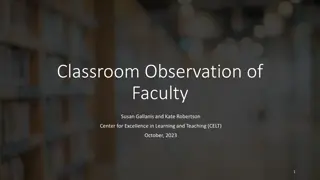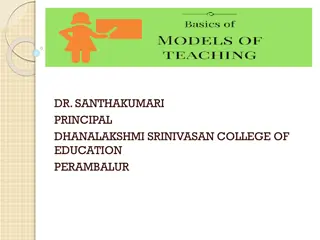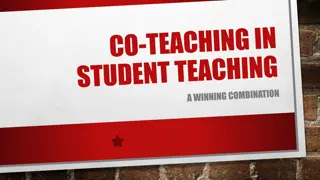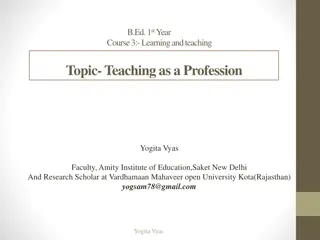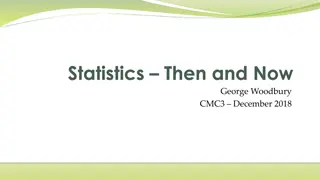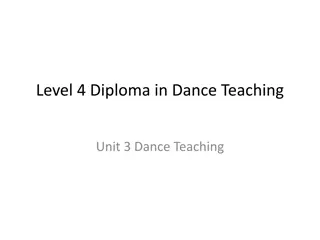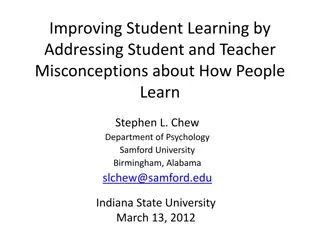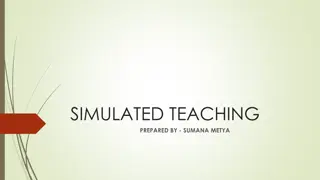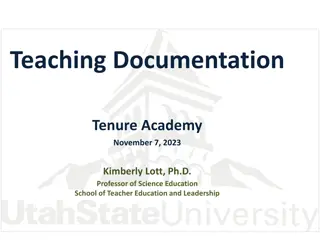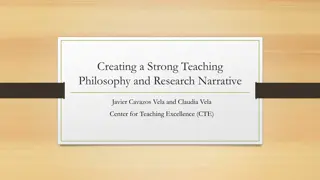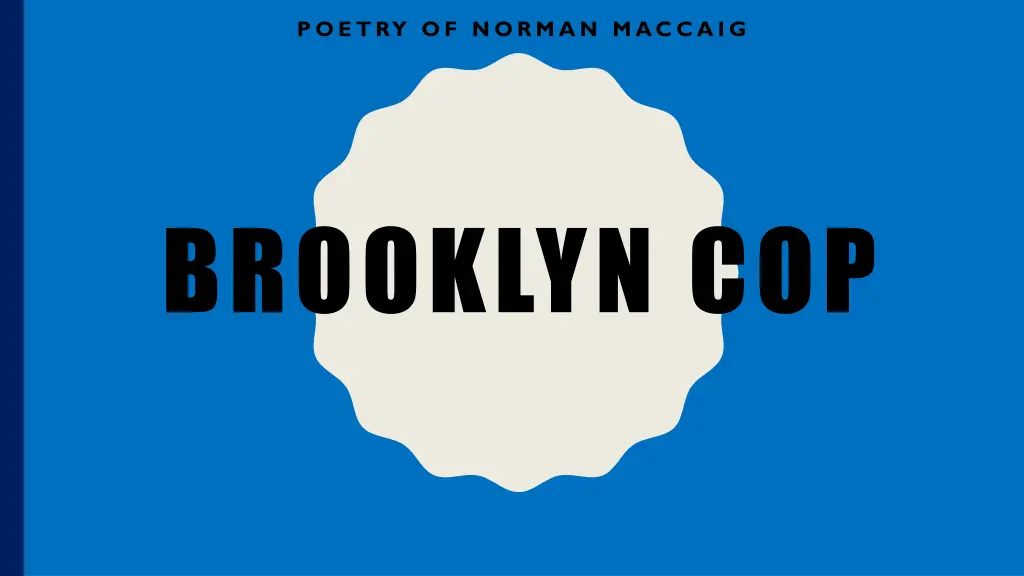
Reflections of a Brooklyn Cop
Explore the vivid portrayal of a New York cop in Norman MacCaig's poem "Brooklyn Cop," delving into the duality of his character and the harsh realities of urban violence. Reflect on themes of human vulnerability and the impact of violence on society as MacCaig skillfully navigates from descriptive to reflective tones.
Download Presentation

Please find below an Image/Link to download the presentation.
The content on the website is provided AS IS for your information and personal use only. It may not be sold, licensed, or shared on other websites without obtaining consent from the author. If you encounter any issues during the download, it is possible that the publisher has removed the file from their server.
You are allowed to download the files provided on this website for personal or commercial use, subject to the condition that they are used lawfully. All files are the property of their respective owners.
The content on the website is provided AS IS for your information and personal use only. It may not be sold, licensed, or shared on other websites without obtaining consent from the author.
E N D
Presentation Transcript
POETRY OF NORMAN MACCAIG BROOKLYN COP
Poets Main Idea This poem is based on an experience MacCaig had in New York in 1968 He describes the physical appearance of the policeman and shows his violent and brutal side In the poem he looks at the hidden vulnerable side of the cop. He also looks at the urban city that the policeman works and explores the violence that is a fact of life to the policeman He uses this to reflect on the wider issues of good and evil in society
Reflective Nature of the Poem In the interview A Metaphorical Way of Seeing Things , MacCaig maintained that poetry clears your eyes and you see things . Like many of MacCaig spoems, Brooklyn Cop moves from description to reflection. This experience leads the poet to reflect on the nature of policemen and who the reader should really feel sympathy for the victims or the policeman.
Theme Reflection on the nature of violence and the impact it has on people. The policeman has been changed by the nature of his job and his fear that he may not return home to his wife However he may sacrifice innocent lives to do his job and reveals the true impact of living in a violent city. Shows the vulnerability of humanity.
Structure Almost stereotypical cop at the beginning strong/brutal/violent but hints at a more tender side. Show how quickly cop could be thrust from safety into chaos violence is always present Moves to a more reflective tone showing impact of violence
Theme MaCaig draws parallels between the cop and the violent criminals. He explores how contact with violence can change you and how complicated human nature is
Stanza One Built like a gorilla but less timid, thick-fleshed, steak-coloured, with two hieroglyphs in his face that mean trouble, he walks the sidewalk and the thin tissue over violence. This morning, when he said, "See you, babe" to his wife, he hoped it, he truly hoped it. He is a gorilla to whom "Hiya, honey" is no clich . Think about: - How is the policeman described? - What two sides of the cop are shown? - What is your impression of the city?
Stanza One Simile Big and strong. Hints at violence and menace WC:Emphasises that he is brutal a gorilla is already not timid, so he must be very brutal to be even less timid Imagery: Ancient stone carving, face is impassive and hard to read like hieroglyphics Contrast to what a cop should be open and honest to the public. WC/description : Emphasises his tough masculine nature through mention of thick steak Built like a gorilla but less timid, thick-fleshed, steak-coloured, with two hieroglyphs in his face that mean trouble, he walks the sidewalk and the thin tissue over violence. This morning when he said, "See you, babe" to his wife, he hoped it, he truly hoped it. He is a gorilla to whom "Hiya, honey" is no clich . Contrasting descriptions the tough and hard literal sidewalk vs. the fragile metaphor describing society easy and ready to break into violence Repetition of hoped reveals the hidden fear he feels in his job he fears he may not see her again Reveals another side to the cop a family man, it humanizes him Simile from start repeated but now it is a metaphor re-emphasises his savage and animalistic nature
Stanza Two Should the tissue tear, should he plunge through into violence, what clubbings, what gunshots between Phoebe's Whamburger and Louie's Place Think about: - What is revealed about the cop s personality? - What you learn about the violence in the city? - What is your impression of the city?
Stanza Two Repetition of should Highlights the uncertainty of living in the city Imagery/WC: Emphasises the threat of violence that is always present and could break out as easily as a tissue ripping Should the tissue tear, should he plunge through into violence, what clubbings, what gunshots between Phoebe's Whamburger and Louie's Place WC: Falling quickly and uncontrollably. Cop is also on verge of violence, and it is like he cannot even control his violent urges List shows escalating violence, emphasising how dangerous the city is. Suggests Mafia hangouts Showing the disreputable places in the city
Stanza Three Who would be him, gorilla with a nightstick, whose home is a place he might, this time, never get back to? Think about: - What is the effect of the rhetorical question? - What you learn about the cop? - What do you learn about the job of being a policeman?
Stanza Three Questioning: who would chose to do this job? To become this inhuman and violent person? Metaphor is brought back to re-emphasise brutality WC:Uses a baton as a weapon: Doesn t use a gun enjoys physical violence/being up close Who would be him, gorilla with a nightstick, whose home is a place he might, this time, never get back to? Rhetorical q: The fear at the heart of the cop that he may be killed and not come back to, another potential explanation for brutality fear. Parenthesis: This fear comes back every night on the job even though the worst never happens, each night could be the one where it does Home can also represent his sense of self suggesting that one day he will be changed so much by his job that he will never be able to get his sense of self back.
Stanza Four And who would be who have to be his victims? Think about: - What is the effect of the rhetorical question? - How these final lines conclude the poem?
Stanza Four RhetorialQ: Similar question as previous stanza repeating the questioning idea, but this time asking about the people he targets Command?: have to makes it sounds like they have no choice repeating the idea that violence is inevitable in the city And who would be who have to be his victims? There has been a sense that the cop is the one in danger throughout the poem, suggesting we should feel sympathy for him, but the final word choice of victims reverses this instead emphasising that the cop is the violent aggressor, and we should feel sympathy for those he meets
An Overview of the Stanzas Stanza One Physical description of policeman. Shows contrast between his cop persona and his real life Stanza Two Focus on the violence underlying the society the man polices Stanza Three Reveals the vulnerability of the policeman and asks who would do such a job Stanza Four Rhetorical, ambiguous question. Forces the reader to think about who is the victim and who we should feel sympathy for. As the poem progresses the stanzas get shorter and more condensed reveals poets fragmented thinking
Starter 10 Mins - Revision Tasks To help you remember the key points of the poem you should: Write a summary of the poem showing how the poet moves from experience to reflection. (No more than five sentences) Identify a key quote for each of the following points (COPY AND COMPLETE): The policeman is a violent and brutal man The violence of the city is ever present The cop is vulnerable Being a policeman is a difficult and complicated job
Starter Brooklyn Cop Look at line 1-5 How does the poet create the sense that the cop is unapproachable in these lines? (4)
Practice Question 2 Look at line 6-16 How does the poet make it clear that the police has many concerns surrounding his job? (4)
Practice Question 3 Look at line 17-18 How does the poet provide a surprising ending to the poem? (2)
STARTER Write down the three steps for answering the 8 mark question.
BROOKLYN COP 8 MARKER 20 MINUTES MacCaig very often uses particularly strange or unusual imagery in his poetry. Referring to this and at least one other poem, discuss some of his strange or unusual imagery.
COMMONALITY In Brooklyn Cop MacCaig uses unusual imagery to dehumanize the police officer and make him seem animalistic. (1) In Assisi, MacCaig uses unusual imagery to describe the beggar and the tourists that he sees. (1)
PRIMARY TEXT Built like a gorilla but less timid (1) This simile opens the poem and immediately dehumanises the cop by comparing him to a gorilla. This is unusual because MacCaig states he is less timid than a gorilla indicating that he is even more violent and aggressive than a wild animal (1)
MacCaig very often uses particularly strange or unusual imagery in his poetry. Referring to this and at least one other poem, discuss some of his strange or unusual imagery. SECONDARY TEXT slumped like a half filled sack (1) This simile compares the beggar to a half filled sack. This is unusual because it indicates that he is shapeless, and similar to more of an empty shell of a human being. (1) tourists clucking contentedly, fluttered after him (1) This metaphor is comparing the tourists to chickens. This is unusual because it implies the tourists have very small brains and cannot think for themselves, suggesting they can be easily manipulated. (1)
COMMONALITY In Brooklyn Cop MacCaig uses unusual imagery to dehumanize the police officer and make him seem animalistic. (1) In Basking Shark, MacCaig uses unusual imagery to describe the shark and the . (1)
BROOKLYN COP 8 MARKER 20 MINUTES MacCaig very often uses particularly strange or unusual imagery in his poetry. Referring to this and at least one other poem, discuss some of his strange or unusual imagery.
COMMONALITY In Brooklyn Cop, MacCaig uses unusual imagery to dehumanize the police officer and make him seem animalistic. (1) In Basking Shark, MacCaig uses unusual imagery to describe the shark and human evolution. (1)
PRIMARY TEXT Built like a gorilla but less timid (1) This simile opens the poem and immediately dehumanises the cop by comparing him to a gorilla. This is unusual because MacCaig states he is less timid than a gorilla indicating that he is even more violent and aggressive than a wild animal (1)
SECONDARY TEXT roomsized monster with a matchbox brain (1) This metaphor makes it clear that, despite its large size, the creature has a small brain. Contrast of this with the animal s size shows difference between physical and mental capacities. Speaker views himself as very different smaller but smarter. (1) Swish up the dirt and, when it settles, a spring is all the clearer (1) MacCaig uses a metaphor here to discuss human evolution. The dirt in this case is the murky thought of how humans evolved into what they now are. This encounter has moved him and helped him to see through the dirt, and understand better. (1)


